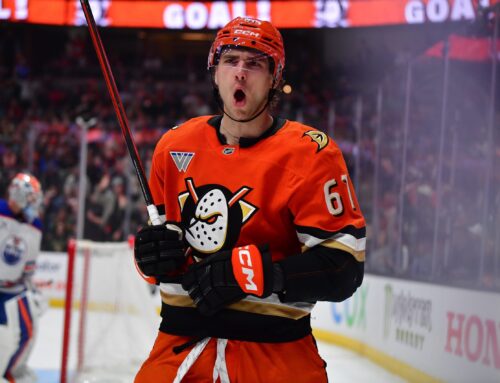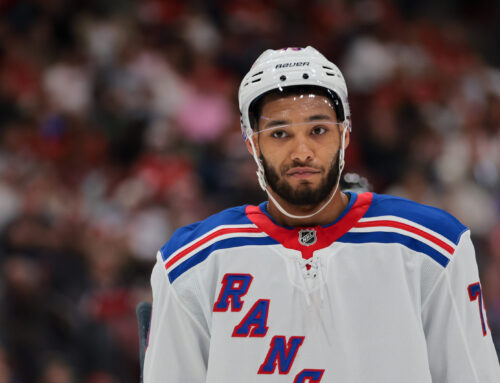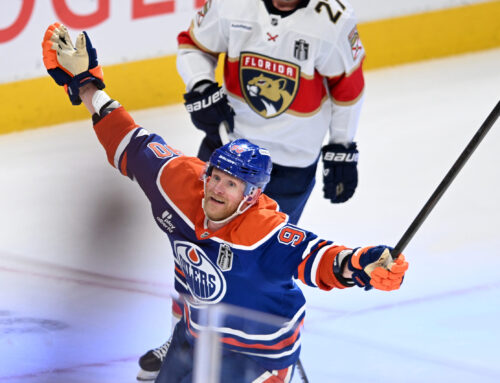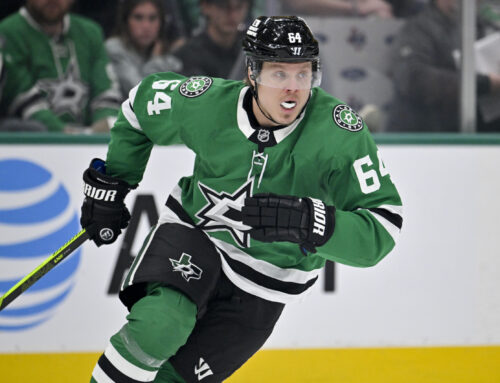Now that most NHL teams are at the 10-game mark of the season, fantasy general managers are trying to get a sense of where they stand with their team.
It’s not easy. It seems as if there are more than the usual number of injuries to top stars this year, plus Covid protocols are also knocking out quite a few players.
Throw in some disappointments, and it’s easy to see why some fantasy general managers find themselves full of pessimism. Anyone having a bad game is awful and you curse yourself for even thinking of owning that player.
Some other general managers are always the optimist; even if their squad is currently in eighth place, they believe they can come back since they’ve had awful luck so far with injuries and slow starts.
Below are 10 players who are having disappointing starts so far. Instead of the usual list on how poor the players’ performances are, we will look at each player from the point of views of the optimist and the pessimist.
10. Thomas Chabot
The pessimist might say: Chabot has three points in 11 games (an 82-game pace of 22 points), and zero points in his last five contests. He’s the top quarterback on a power play that has been since he took on that role four seasons ago, but he doesn’t produce with the man advantage.
The optimist might say: His 27:11 average ice time is highest in the league going into Sunday’s action, and there’s no one to usurp him off that top man-advantage unit this season. He’s putting up a career-high 2.9 shots per game, and is a tad underrated when it comes to hits and blocked shots. Offensive defensemen are notoriously streaky, but there’s a reason Chabot had managed an 82-game pace of at least 45 points in each of the last three seasons.\
9. Roope Hintz
The pessimist might say: Hintz has one point through 10 games before Sunday night’s game, and his ice time is down to 16:17 a night, almost two fewer minutes a night than a season ago. His power-play time is also down a minute per night.
The optimist might say: He’s shooting the puck more than ever, averaging 2.6 shots per game. His ice time was actually down in the first few games, but is up to slightly more than 18 minutes per night in his last six contests. He’s also been with Jason Robertson for those six games, as opposed to Jacob Peterson.
The pessimist might say: The Flyers never trust him to run a power play, always preferring to bring in specialists and relegating Provorov to the second unit. With zero goals and two assists in 10 games, he’s just not performing. His 1.5 shots per game is also a detriment to fantasy hockey.
The optimist might say: He’s still averaging almost 25 minutes per game and has taken back his role on the top power-play unit throughout November, so don’t expect this slow start to continue for long. He also has 28 blocked shots in 10 games, which was top 10 in the league going into Sunday’s action (everyone else in the top 10 had more games played) and only four off the league lead.
7. Kaapo Kakko
The pessimist might say: The guy’s a bum. After two subpar seasons, Kakko hasn’t shown any offensive flair. He doesn’t shoot the puck, hit or block shots. He’s not putting up any points, and is pretty much useless in fantasy hockey.
The optimist might say: While he’s obviously struggling, the coaching staff believes he has a ton of upside and talent as about 90 per cent of all of Kakko’s five-on-five shifts have been with Artemi Panarin. The Rangers have also had a difficult start to the season, with nine of their first 12 games on the road. The ability to match lines that comes with home-ice advantage and continuing to play with Panarin could help lead to a Kakko breakout soon.
The pessimist might say: The Coyotes are in the running for one of the worst teams of the salary cap era. Aside from Shayne Gostisbehere, there’s little offense from anyone else on the team. The team’s three power-play goals are tied for second-worst. With one point in 12 games to go along with a minus-20, Chychrun will wind up with the worst minus/points ratio in NHL history at this rate.
The optimist might say: He’s still a beast in grit categories, with 20 PIM, 35 shots, 21 hits and 15 blocked shots in 12 games. He’s averaging 24:36 per night, and you have to figure the team’s offense can’t be this putrid all season.
The pessimist might say: Even though he’s missed a few games at the start of the campaign, Klingberg has only two points in six games since his return going into Sunday night’s action. His average ice time is down a minute per game from a season ago and his power-play ice time has gone from 3:01 a year ago to 1:53 this season.
The optimist might say: His ice time is actually down a little thanks to the first game of the season, when he played 10:21 before leaving with a lower-body injury. Since his return, he is averaging 23:42, his highest since 2018-19. He’s picked up points in each of his last two games before Sunday night. Not only is his shot rate slightly higher, but he’s also seeing a slight uptick in average hits and blocked shots per game.
4. Jeff Petry
The pessimist might say: He’s not scoring, the Habs are a mess, they can’t produce on the power-play and Petry isn’t shooting the puck. Through 13 games, Petry has a measly two assists and is a minus-two to go along with two PIM and 15 shots. He’s averaging 1.2 shots a game, almost half of his average of 2.3 a year ago and the lowest since he was traded from Edmonton to Montreal.
The optimist might say: He’s still providing hits (25) and blocked shots (15), so at least he’s producing in a couple of categories. He’s also averaging 24:11 a night, so he’s getting the minutes. There’s also no one else on Montreal who can produce, so Petry doesn’t need to worry about someone else eating into his minutes.
The pessimist might say: The guy has to be one of the most overhyped young players in the game. Despite the early promise, his point-per-game mark has dropped the last couple of seasons, and this year he’s on pace for a 37-point campaign. He has also stopped producing on the power play the last couple of years.
The optimist might say: Last year, Pettersson had two points in his first eight games before potting 19 in his last 18, so going on an insane hot streak is not out of the question. The 22-year-old Vancouver forward (who turns 23 this coming Friday) is seeing career highs in average ice time per game and in power-play time per game this season. His 2.8 shots per game going into Sunday night's game are also the highest he’s ever posted.
The pessimist might say: He has five points in 12 games, which puts him on an 82-game pace of 34 points, the worst 82-game pace of his career. Vegas is stuck playing Nicolas Roy and William Carrier in top-six roles because of all the injuries, which means the offense is dried up.
The optimist might say: Despite his slow start, AP has five points in his last five games. He’s still a beast for shots, as he has at least two shots in 10 of 12 games, and at least five shots in four of those. His average ice time is up more than a minute per game from a season ago, and Mark Stone and Max Pacioretty should both be back within a few weeks, which will help elevate both the power play and five-on-five scoring.
1. Kevin Fiala
The pessimist might say: After a couple of years where he was underrated, big things were expected from Fiala this season. But with only one goal and five points in his first 11 games, he’s been extremely underwhelming and is still away from Kirill Kaprizov at even strength.
The optimist might say: Fiala’s slow start is par for the course. Two seasons ago, he had one point in his first eight games, and then 53 in his next 56. Last season, he started with 14 points in his first 28 contests, and then had 26 in his final 22. His average ice time is two minutes higher than a year ago and he’s still on the top PP unit. He’s also averaging three shots and surprisingly, one hit per game.





 MTL
MTL NYI
NYI EDM
EDM UTA
UTA NSH
NSH FLA
FLA ANA
ANA OTT
OTT WSH
WSH
